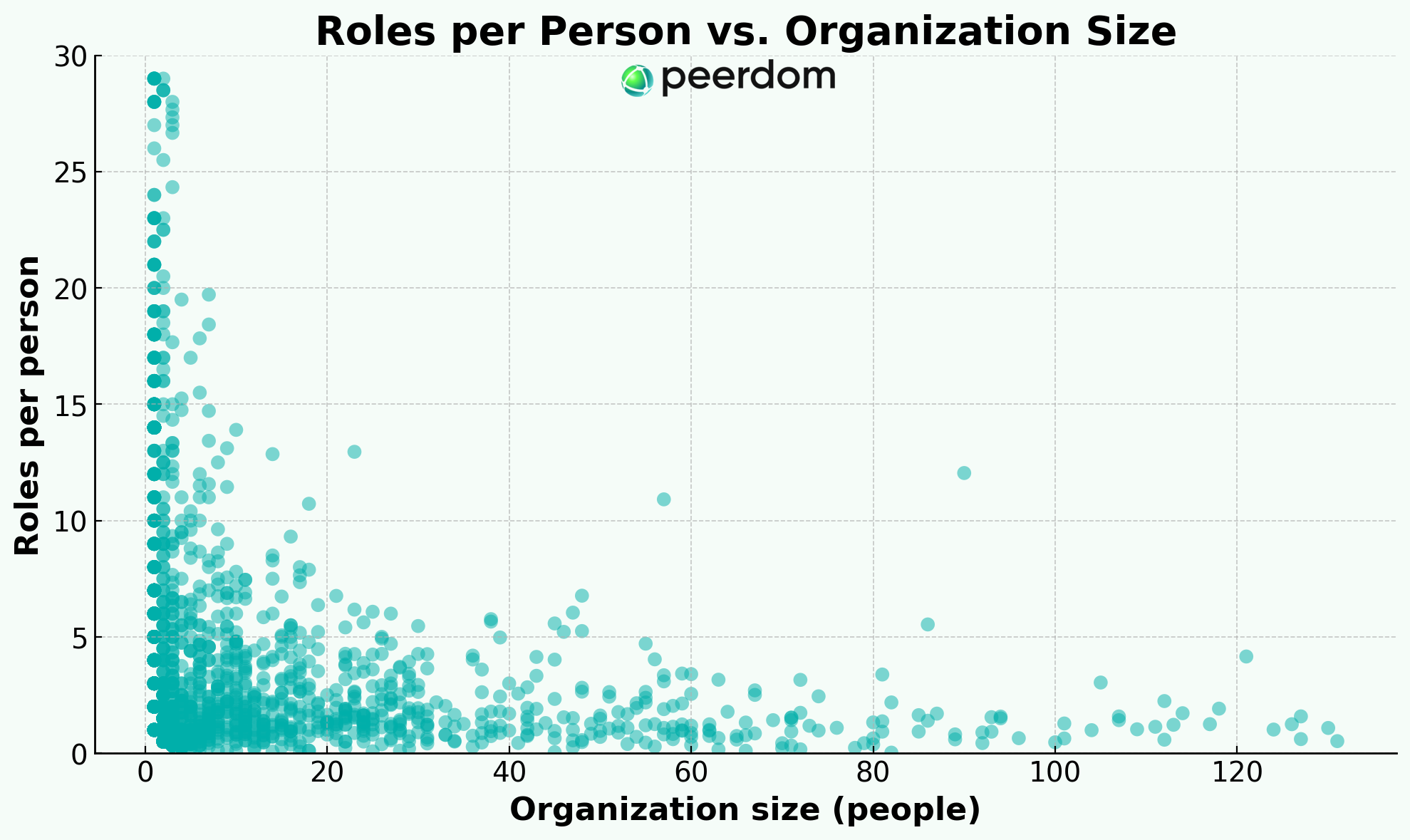From Many Hats to Tight Boxes: How Company Growth Narrows Roles
As organizations grow, specialization becomes inevitable. Learn how role clarity and organizational mapping help teams navigate scaling, prevent silos, and keep collaboration alive.

We analyzed data from more than 4000 organisations and found that as companies scale, specialists replace generalists. Is that progress or isolation?
The pattern
Our dataset shows job scope narrowing as companies grow. One scatterplot tells the story: micro-teams cluster in the upper left, where each person juggles up to eight roles on average. By the time headcount rises toward eighty, the cloud already tightens, flattening to one or two roles per person. Breadth surrenders to depth as coordination costs rise and structure calcifies.
Lessons from organization science
Classic research predicted this curve. The Aston group (Pugh et al., 1968) linked size to specialization and formalization. Lawrence and Lorsch (1967) showed that complexity brings differentiation. Mintzberg’s “simple structure” morphs into a “machine bureaucracy” once narrow professional roles dominate. Modern scale-up studies echo the same trade-off: around one hundred people, most work moves inside specialist silos. Depth and risk control improve, but so does the danger of isolation.
The silo trap
Breaking problems apart is only half the job. Stitching them back together requires boundary-spanners, T-shaped talent, and routines that make cross-functional collaboration feel natural rather than forced. As you scan the scatterplot, it's worth asking where your organization sits and what bridges you are building.
Are you nurturing the connectors who keep the puzzle intact? Or are you hoping the boxes on the chart will realign themselves? That choice often decides whether your growth scales value or simply amplifies isolation.
A simple antidote to silos
Make the work visible. Peerdom maps roles, goals, and relationships so teams find the right colleague with the right skillset to coordinate faster. Book a demo or try it for yourself today.
